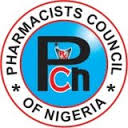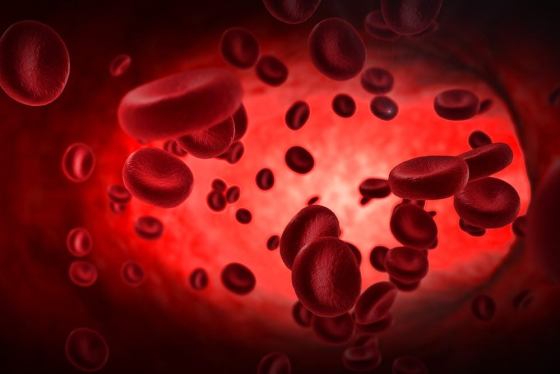The Health Community has been once more thrown into confusion by another deadly, traumatizing outbreak, known popularly as the “EBOLA OUTBREAK”. According to the Head of World Health Organization (WHO) Margaret Chan “the Ebola outbreak in West Africa is spreading faster than efforts to control it”. She told a summit of regional leaders that failure to contain Ebola could be “catastrophic” in terms of lives lost. She noted that the virus, which has claimed 728 lives in Guinea, Liberia, and Sierra Leone since February, could be stopped if well managed. As a result of the sudden outbreak in West Africa what is the way forward?
WHAT IS EBOLA VIRUS DISEASE?
The Ebola Virus disease (EVD), formerly known as Ebola hemorrhagic fever is a severe condition caused by a virus from the Filoviridae family. It is zoonotic in nature, that is, it is a condition that can be transmitted from animals to man, this virus spreads through direct contact with bodily fluids of an infected person or animal.
TRANSMISSION.
According to WHO, Ebola is introduced into the human population through close contact with blood, secretions, organs or bodily fluids of infected animals. In Africa infection has been documented through the handling of infected chimpanzees, gorillas, fruit bats, monkeys, forest antelope and porcupines found ill or dead or in the rain forest.
Ebola then spreads in the Community through human-to-human transmission, with infection resulting from direct contact (through broken skin or mucous membranes) with the blood, secretions, organs, or other bodily fluids of infected people, and indirect contact with environments contaminated with such fluids. Burial ceremonies in which mourners have direct contact with the body of the deceased person can also play a role in the transmission of Ebola. Men who have recovered from the disease can still transmit the virus through their semen for up to 7 weeks after recovery from illness.
DIAGNOSIS.
WHO informs us that before we diagnose EVD we must rule out other diseases like malaria, typhoid, shigellosis, cholera, leptospirosis, plague, rickettsiosis, relapsing fever, meningitis, hepatitis and other haemorrhagic fevers.
Ebola virus infection can be diagnosed definitively in the Medical Laboratory through several types of test namely:
(a) Antibody-Capture Enzyme-Linked Immunosorbent Assay(ELISA)
(b)Antigen Detection Tests
(c) Serum Neutralization Test
(d) Reverse Transcriptase Polymerase Chain Reaction (RT-PCR)
(e) Electron Microscopy
(f) Virus Isolation by Cell Culture
Samples from patients should be seriously handled with care as they are extreme biohazards, and testing should be conducted under maximum biological containment conditions.
NATURAL HOST OF EBOLA VIRUS
The fruit bat particularly species of the genera-Hypsignathus monstrosus, Epomops franqueti and Myonycteris torquata, in Africa are considered possible natural hosts for Ebola Virus
VACCINE AND TREATMENT.
WHO still informs us that as at today there is no licensed vaccine for EVD. Many vaccines are being tested, but none are available for clinical use. Ill patients require intensive supportive care. Patients are frequently dehydrated and require oral rehydration with solutions containing electrolytes or intravenous fluids. No specific conventional treatment is available and new drug therapies are being evaluated.
EBOLA VIRUS AND PHYTOMEDICINE/PHYTOTHERAPY
According to a research, led by Professor Maurice Iwu, head, the Bioresource Development and Conservative Program, a Nigerian Professor of Pharmacognosy and former Independent Electoral Committee Chairman( INEC Chairman) a plant commonly eaten in West Africa, Garcinia kola has been found to halt the deadly Ebola virus in its tracks in tests. This discovery was announced at the 16th International Botanical Congress in St Louis in the United States of America in 1999.This inhibitory action is yet to be duplicated in animals and in humans. IF this can be achieved in human, then it means that we are at the verge of another breakthrough. Prof Iwu had this to say “This is a very exciting discovery, the same forest that yields the dreaded Ebola virus could be a source of the cure” The active compound in the Garcina kola is a dimeric flavonoids, which is two flavonoid molecules fused together. More work needs to be done to see if a phytomedicine can be developed from Garcinia kola commonly called bitter kola. Phytomedicine has always been useful to man, that some modern drugs are of plant origin eg Digitalis from the plant floxglove for management of cardiac abnormality, the Pacific Yew –Taxus brevifolia which gave the anticancer drug Taxol, aspirin from the Willow tree which is used as a pain killer, quinine from the cinchona plant which is used as an anitmalaria etc.
THE URGENT NEED TO EMBRACE INTEGRATIVE MEDICINE IN NIGERIA.
As a result of reemerging and emerging outbreaks that have defied conventional therapies, antibiotic resistance, cases of multiple drug resistance, frequent closure of hospitals as a result of unwarranted/unnecessary strike action, there is an urgent need to embrace medical pluralism in Nigeria. Medical pluralism is all about Integrative Medicine. Integrative Medicine is the application/use of conventional therapies and ethnomedical therapies like in Alternative Medicine, Traditional Medicine(TM), and Complementary Medicine in the prevention, diagnosis, treatment and management of diseases in a community. The new paradigm is Integrative Medicine in order to achieve healthcare for all through a functional and holistic approach. WHO informs that an integrated system integrates conventional and TM systems at level of medical education and practice. Integrative measures include government regulation and registration to control the safety, efficacy, and quality of herbal medicine products; registration of healers and herbalist; and establishment of specialized hospitals, colleges, and universities. China, the Democratic People’s Republic of Korea, the Republic of Korea, and Vietnam are countries considered to have fully integrated system (WHO 2002).Philippines has a national policy on TM, while India has one of the best digital library/data base on knowledge and formulations used in Ayurveda .Countries like, United Kingdom, United States, Germany, Canada, Australia etc are said to practice a mixed medical system. In Africa Uganda has added traditional healing studies to its university curriculum to show that TM has a role in the healthcare system. Ghana has already established universities running bachelors in herbal medicine, while South Africa recognizes traditional healthcare providers as full-fledged healthcare professionals.
CONCLUSION.
(1) In other to tackle the reemergence and emerging infections, sporadic outbreaks and to provide effective healthcare services in Nigeria, Government as a matter of urgency should adopt the Total Integrative Medical System Initiative (TIMS INITIATIVE).Which tends to utilize Conventional therapies, Ethnomedical therapies like Traditional Medicine, Alternative Medicine, and Complementary Medicine in the prevention, diagnosis, treatment and management of diseases.
(2) Government should equip our medical laboratories to handle the identification, isolation and characterization of emerging microorganisms and make sure that medical laboratories in Nigeria are strategically placed in monitoring disease outbreaks and control.
(3) Government should introduce the practice of ethnomedicine in our hospitals and create an Ethnomedical Council of Nigeria to regulate its practice and practitioners.
(4) Government should really empower the National Natural Medicine Development Agency Koffo Abayomi Victoria Island to develop a curriculum for the training of Ethnomedical practitioners in Nigeria for the onward integration into the Nigerian Healthcare System.
(5) Government at all levels (Local, State, and Federal) should encourage research and documentation of our indigenous medicinal fauna and flora for drug development and utilization.
BY DR BENJAMIN CHUKWUNONSO AJUFO
About the author:
DR BENJAMIN CHUKWUNONSO AJUFO wrote from Kolkata India is a Medical Laboratory Scientist/Doctor Holistic Medicine.
REFERENCES
Jaax, N etal (1995) Transmission of Ebola virus (Zaire Strain) to uninfected control monkey in a biocontainment laboratory. The Lancet Vol.346 Decenber23/30 1669-1671
Nigerian Tribune Saturday August 2 2014
Martini , G A, Siegent R eds (1971)Marburg virus disease. Berlin: Springer-Verlag:
Peters, C J(1999)An introduction to Ebola: The Virus and the Disease “Journal of infectious Disease,”179(suppli): ix-xvi
http://www.who.Int/media centre/fact-sheets/fs103/en/
http://www.thehealthsite.com
http://odili.net/news/source/2014/aug//1622.html.
http://www.motherearthliving.com/health-and-wellness/the-origin-of-plant-medicine.aspx
WHO Traditional Medicine Strategy 2002-2005 Geneva
WHO<http://whqlibdoc.who.Int/hq/2002/who_EDM_TRM_2002.1PDF
ABUJA: Training Schedule for Basic Life Support BLS, Pediatric Advanced Life Support (PALS), Advanced Cardiovascular Life Support ACLS, First Aid, CPR, AED
PORTHARCOURT: Training Schedule for Basic Life Support BLS, Pediatric Advanced Life Support (PALS), Advanced Cardiovascular Life Support ACLS, First Aid, CPR, AED
LAGOS: Training Schedule for Basic Life Support BLS, Pediatric Advanced Life Support (PALS), Advanced Cardiovascular Life Support ACLS, First Aid, CPR, AED





